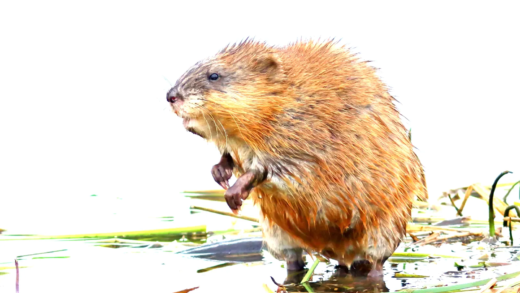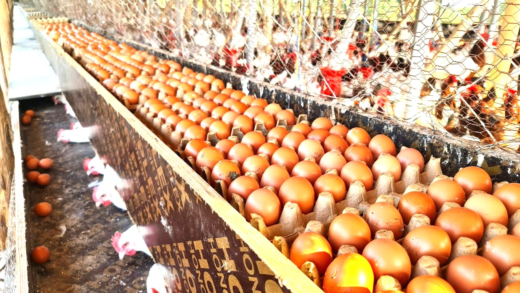Gorillas primarily consume a variety of plants, including leaves, stems, roots, fruits, and flowers. Their diet varies significantly based on habitat, with mountain gorillas focusing on tougher foliage while lowland gorillas enjoy a wider array of fruits. Nutritionally, gorillas benefit from proteins, carbohydrates, vitamins, and minerals in their plant-based diet, supporting their muscle development. Social structures influence their foraging, while seasonal changes impact food availability. Gorillas also exhibit unique adaptations for processing tough plant materials, enabling them to thrive as herbivores.
Types of Plants Gorillas Eat
Gorilla diet primarily consists of a variety of plants found in their natural habitats. These magnificent creatures are herbivores, and their eating habits reflect a strong reliance on vegetation. Common types of plants gorillas consume include:
- Leaves: Gorillas favor tender leaves, which provide essential nutrients.
- Stems: They often munch on the fibrous stems of plants, which are rich in fiber.
- Roots: Roots offer a dense source of carbohydrates and are a staple in their diet.
- Fruits: Gorillas enjoy seasonal fruits, which provide sugars and vitamins.
- Flowers: Some species of gorillas will also eat flowers, adding variety to their meals.
Understanding the types of plants gorillas eat helps us appreciate their role in the ecosystem. They are vital for seed dispersal, contributing to forest regeneration.
Habitat Impact on Diet
The diet of gorillas varies significantly depending on their habitat. Different environments shape their eating habits and the types of plants available. For example:
- Mountain Gorillas: Found in high-altitude forests, they primarily consume leaves and stems from shrubs and trees adapted to cooler climates.
- Lowland Gorillas: These gorillas inhabit tropical rainforests where fruits and softer vegetation are more abundant.
- Swamp Gorillas: They often eat aquatic plants and have adapted to foraging in wet environments.
Each habitat presents unique challenges and opportunities that influence gorilla feeding behaviors. This diversity in diet helps gorillas meet their nutritional needs based on the availability of food resources.
Nutritional Benefits
The plant-based diet of gorillas provides numerous nutritional benefits essential for their health and well-being. Key nutrients obtained from their diet include:
- Proteins: Essential for muscle growth and repair, proteins are abundant in leafy greens.
- Carbohydrates: These are crucial for energy, especially from roots and fruits.
- Vitamins: Fruits and vegetables provide vitamins A, C, and E, supporting immune function and overall health.
- Minerals: Calcium and iron from plant sources contribute to bone health and blood production.
Despite being herbivores, gorillas develop strong muscles due to the high protein content in their plant diet. Their unique digestive systems allow them to efficiently extract nutrients from tough plant materials, supporting their massive size and strength.
Muscle Building on Herbivorous Diet
The gorilla diet, despite being entirely herbivorous, supports impressive muscle development. Gorillas consume a variety of plants that are rich in proteins, which are crucial for muscle growth. Key components of their diet include:
- Leafy Greens: Tender leaves provide not only proteins but also essential amino acids necessary for muscle repair and growth.
- High-Fiber Stems: The fibrous nature of stems helps strengthen their digestive system, allowing for better nutrient absorption.
- Roots: Rich in carbohydrates, roots fuel their energetic lifestyle and contribute to muscle maintenance.
Moreover, gorillas have evolved unique digestive systems that efficiently break down tough plant materials, maximizing nutrient extraction. This ability allows them to maintain their large size and strength, showcasing how a plant-based diet can effectively support muscle building.
Social Structures and Foraging
The social structures of gorillas play a significant role in their foraging behaviors. Gorillas live in family groups led by a dominant male, known as a silverback. This social dynamic influences their feeding habits in various ways:
- Cooperative Foraging: Gorillas often forage together, helping each other locate and access food sources more efficiently.
- Protection: The presence of a silverback provides security, allowing group members to explore wider areas for food.
- Learning: Younger gorillas learn foraging techniques from older members, ensuring the passing down of knowledge regarding which plants are safe and nutritious.
This social interaction not only enhances their foraging success but also strengthens bonds within the group, making them more resilient in finding food.
Seasonal Changes in Feeding
Seasonal changes significantly affect gorilla feeding behaviors and dietary preferences. Different seasons bring about variations in food availability and types of plants. Key aspects include:
- Wet Season: Abundant rainfall leads to a surge in plant growth, providing gorillas with a variety of leafy greens and fruits.
- Dry Season: Food becomes scarcer, prompting gorillas to adapt their diet, often relying more on roots and tougher plant materials.
- Fruit Availability: Certain fruits are seasonal, making them a special treat during their peak times, which gorillas eagerly seek out.
These seasonal fluctuations challenge gorillas to adapt their foraging strategies, ensuring they meet their nutritional needs throughout the year.
Favorite Fruits and Flowers
The gorilla diet includes a variety of fruits and flowers that they particularly enjoy. These items not only add diversity to their meals but also provide essential nutrients. Some of the favorite fruits and flowers of gorillas include:
- Bananas: Gorillas love bananas for their sweet taste and high sugar content, making them an energy-rich snack.
- Figs: These fruits are often a staple in their diet, providing fiber and vitamins.
- Wild Berries: Various types of berries are sought after for their sweetness and nutritional benefits.
- Flowers: Gorillas sometimes eat flowers, especially those that are tender and packed with nutrients, like hibiscus.
These fruits and flowers not only satisfy their taste buds but also support their health, showcasing the importance of variety in their herbivorous diet.
Mountain vs. Lowland Gorillas Diet
The dietary habits of mountain gorillas differ significantly from those of lowland gorillas due to their respective habitats. Mountain gorillas, living in colder climates, primarily consume:
- High-Fiber Leaves: They focus on tough leaves and stems from shrubs that thrive in their cooler environment.
- Herbs: Various herbaceous plants are also part of their diet, providing necessary nutrients.
In contrast, lowland gorillas thrive in tropical rainforests where:
- Fruits: They have greater access to a variety of fruits, which are softer and more abundant.
- Soft Vegetation: These gorillas consume more tender leaves and shoots, adapting their diet to the lush environment.
This dietary contrast highlights how gorillas adapt their eating habits to their surroundings, ensuring they meet their nutritional needs.
Gorilla Eating Habits vs. Other Herbivores
When comparing gorilla eating habits with those of other herbivores, notable differences and similarities emerge. Gorillas, as large primates, have unique feeding strategies:
- Selective Feeding: Gorillas are selective in their plant choices, often opting for high-nutrient foliage, unlike some herbivores that graze indiscriminately.
- Social Foraging: Their social structures enable cooperative foraging, which is less common among many other herbivorous species.
- Specialized Digestion: Gorillas have developed strong digestive systems capable of breaking down tough plant materials, a trait shared with some other herbivores, but refined in their unique way.
This comparison illustrates the adaptability and specialized nature of gorillas’ feeding habits, showcasing their evolution as a species.
Adaptations for Tough Plant Materials
Gorillas possess remarkable adaptations that allow them to process tough plant materials effectively. These adaptations include:
- Powerful Jaws: Gorillas have strong jaws and teeth designed to crush and grind fibrous plants, making it easier for them to consume their tough diet.
- Long Digestive Tract: Their extended digestive system allows for more time to break down plant fibers and absorb nutrients efficiently.
- Microbial Fermentation: The gut of gorillas hosts specialized microbes that assist in breaking down complex carbohydrates found in their diet.
These physical adaptations ensure that gorillas can thrive on a plant-based diet, highlighting their evolutionary success as herbivorous animals.





Comments are closed.